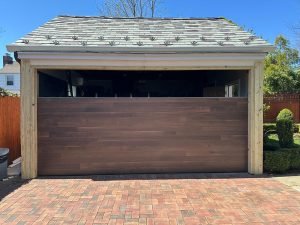Installing It Right the First Time: Why It’s Worth It
In situations, where it concerns the process of installing such a product as garage doors, HVAC systems, or any other sophisticated mechanism, this task is not merely a job. It is a rental in security, productivity and future security. A well-done initial installation will make your system work as it is expected to, reduce the possibility of errors, and it will also prevent the future expensive repair costs.

Alternatively, having a poorly installed system may cause long run problems. Improper installation may lead to malfunctions, decreased performance, safety risks and unjustified repairs. These problems not only empty your pocket but also your patience. This is why the key focus should be placed on the professional and error-free installation procedure.
In this blog, we will discuss when it is important that the first installation gets done properly, some of the mistakes that should be avoided and the advantage of utilizing the services of a professional and what one should consider when hiring an installer.
Why Correct Installation Matters
Proper installation is not only about getting a system to operate but also longtime efficiency, durability, and safety of the user.
Prioritizing Safety
Safety is also an important issue particularly in certain systems such as garage doors or electrical machines. Improper installation presents the danger of injury or accidents because of the malfunctioning mechanisms or poor alignment. To illustrate, a poorly fitted garage door may not open or close as intended or may even collapse when nothing is expected hence a major hazard. The safety issues are addressed by making sure everything is strictly and professionally fastened.
Long-Term Cost Savings
Correcting the wrong done is an expensive exercise than doing the job right in the first place. Failure to install with a good plan will result in the user experiencing problems in terms of low efficiency, high repairs or total failure that would require a new system. These risks can be avoided through a proper and professional installation in the first place whose cost-effectiveness will be of benefit in the long-run.
Maximizing Longevity
Whatever the system, the high-end or not, it will only be as good as the installation. Installing a product according to the specifications of the manufacturer offers it the best opportunity to serve the intended period. Poor installations on the other hand will cause wear and tear earlier than anticipated, and a product whose lifetime will be highly reduced.
Enhancing Performance
Efficiency is related directly to the quality of the installation. Poor wiring, lack of proper mechanism, and missed out steps would result in diminishing functionality leading to poor performance. An accurately mounted system promises that you obtain maximum benefit of the value you have invested in whether on savings or hassle-free operations.
Common Mistakes During Installation
Even high end systems can be weakened by a bad installation. The errors committed in the installation usually become problems in the future. The most frequent pitfalls are listed below.
Skipping Manufacturer Guidelines
Among the most widespread errors which people make is disregarding or misreading the special instructions provided by the manufacturer of the product, how it should be installed. These are some recommended rules and not observing them may simply lead to poor performance or the overall system collapse.
DIY Installations Without Proper Knowledge
You are encouraged to think of DIY installation projects, which is a seemingly excellent money-saving tip, but it costs more in the long-term perspective. Most of the users do not have any expertise, tools or knowledge to make complicated setups. To give an example, putting an automatic garage door opener without thinking over the issue might result in breaking this mechanism or even destroying the door.
Cutting Corners
There is always the temptation to just shave off a few steps, or use inferior materials. However, cut corners translate to compromise system integrity. You can have leakages or malfunctions due to poor material or speed in completing it.
Misreading the Space
Another typical mistake that happens during the fitting is improper measurements. Such as installing a door just a bit out of its alignment may lead to wear on the doors tracks or creating gaps in insulation and security. Measurements of the space and room size are a vital part of creating a smooth installation.
The Benefits of Professional Installation
Bringing in a professional for installation can avoid countless headaches. Here’s why it’s worth making this investment.
Expertise and Experience
Professionals have a lifetime experience and knowledge. They have experienced a large variety of situations, and know how best to address them. Such an experience will lead to reduced mistakes made and installation time as well as a properly functioning system.
Using Proper Tools and Equipment
There are special tools needed in some of the installations, which the professionals already have. A DIY job usually lacks the correct equipment and therefore is likely to sacrifice efficiency or safety. Professionals not only take the equipment required but they are also trained to use it correctly.
Following Standards and Regulations
Experienced installers know and respect the legal and industry standard accompanying the job. In the case of garage doors, it can involve some safety precautions like limit of weight loads and force. Obedience guarantees that you won’t have any regulatory headaches.
Warranty and Insurance
The majority of professional services have warranty on their work. This implies that when installation should have gone wrong, you are insured. In addition, covered experts guarantee a relaxing mind in case of failure to work during installation.
Choosing the Right Installer
Choosing the right professional for your installation project is as important as the installation itself. Here’s a simple guide to help.
Check Credentials
This is to ensure that the installer is a licensed and certified person to work in your area. Possessing these credentials shows that they manage to stay in line with industry standards and rules.
Read Reviews
Past customer reviews and testimonials offer an unscrupulous image of how professional and reliable the installer is. To obtain information about the level of competence and work ethic of the installer, find the similarities in reviews.
Ask for References
A reliable installer will not shy away in giving out references or displaying previous jobs. This can enable you to judge the quality of their work and then make a decision.
Understand Costs and Timelines
Speak elaborately about the prices and the duration of the installation project. A professional must not hide prices and must clearly state them including break down. Effective communication is the best way to keep you out of troubles as well as smooth running of the process.
Conclusion
Proper installation is not about making something to work, it is about durability, safety and efficiency. Spending time and resources at the front end keeps you out of a list of possible problems that could crop up later. This is regardless of whether it is safety issues, efficiency or lifetime savings, it always pays to do it right the first time.
Next time you are undergoing an installation project, you should think of hiring a professional that will give you the expertise, advice and smooth experience. The long-term profits of a professional installation are more than what might come in the short-term, as in DIY or laborers, not very experienced in the industry.
FAQs
Why prefer professional installation to a do-it-yourself?
Professional installation guarantees all the actions are performed accurately, minimizing safety hazards and the aspect of mistakes in the future.
Where would I get a licensed installer in my area?
Ask people for suggestions, verify online reviews, and ask installers to provide references to find reliable ones in your neighborhood.
Is it worth installing it professionally?
Absolutely. Professional installation is cost-effective in the end because it eliminates one-off problems and subsequent recurring costs.








